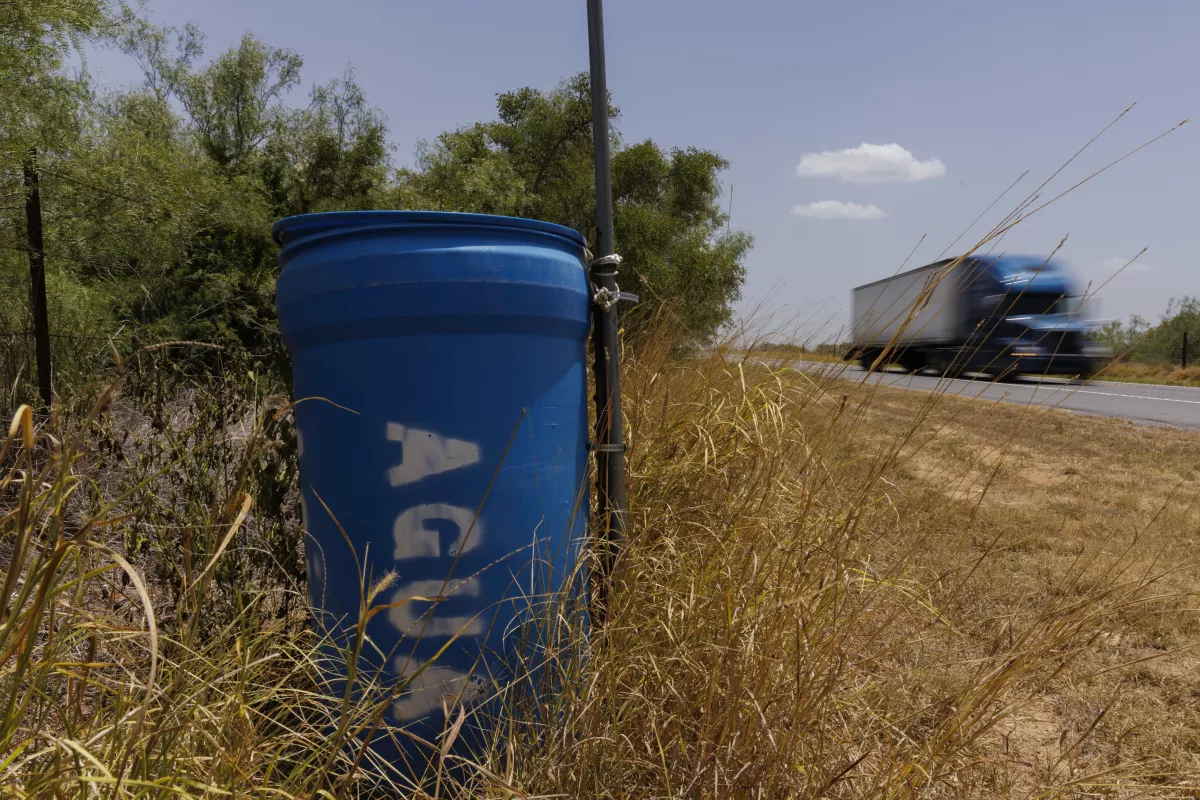Amidst one of the worst heatwaves recorded in much of the southern United States, authorities and activists in the southern region of Texas have been entangled in a mystery in this arid area near the Mexican border.
Several large barrels containing water bottles that a human rights group had strategically placed to save the lives of lost migrants walking through had disappeared.
Normally, they were hard to miss. The blue barrels of 55 gallons (208 liters) each, with the word “WATER” painted in capital letters, stand waist-high and protrude from the withered brown vegetation dried by the sun.
Nonetheless, solving this mystery is proving very difficult.
Summer temperatures can rise to 110 degrees Fahrenheit (43.3 degrees Celsius) in the sparsely populated Jim Hogg County of Texas, where there are vast ranches in inhospitable territories.
Migrants and sometimes human traffickers take a route through this county in an attempt to avoid a Border Patrol checkpoint on a busy road about 30 miles (48 kilometers) to the east.
In an area over 60 miles (96 kilometers) from the US-Mexico border, migrants can take several days to reach that route after spending weeks crossing mountains and desert and avoiding cartel violence.
“We can’t afford to waste time in what we do,” said Ruben Garza, an investigator with the Jim Hogg County police. Tears welled up in his eyes as he remembered helping locate a missing migrant who suffered heatstroke among the vegetation. The person called for help but died shortly after being rescued.
It’s difficult to keep an accurate count of the deceased as many deaths go unreported. The International Organization for Migration, a UN agency, estimates that nearly 3,000 migrants have died crossing from Mexico to the United States, either by drowning in the Rio Grande or due to lack of shelter, food, or water. The Rio Grande is called the Rio Bravo in Mexico.
Humanitarian groups began placing water for migrants on the US side of the Mexico-US border in the 1990s after authorities began finding the bodies of people who had succumbed to harsh conditions.
John Meza is a volunteer with the South Texas Human Rights Center in Jim Hogg County, where the 5,000 inhabitants are spread over an area of over 1,100 square miles, larger than the state of Rhode Island.
Meza replenishes the water stations with gallon jugs, clears overgrown weeds, and ensures that GPS coordinates remain visible on the bottom of the barrels’ lids.
On one of his rounds in July, Meza said, 12 out of the 21 stations he maintained were no longer in place.
The Associated Press compared images taken by Google Maps over the last two years and confirmed that some barrels were no longer there.
TYT Newsroom



